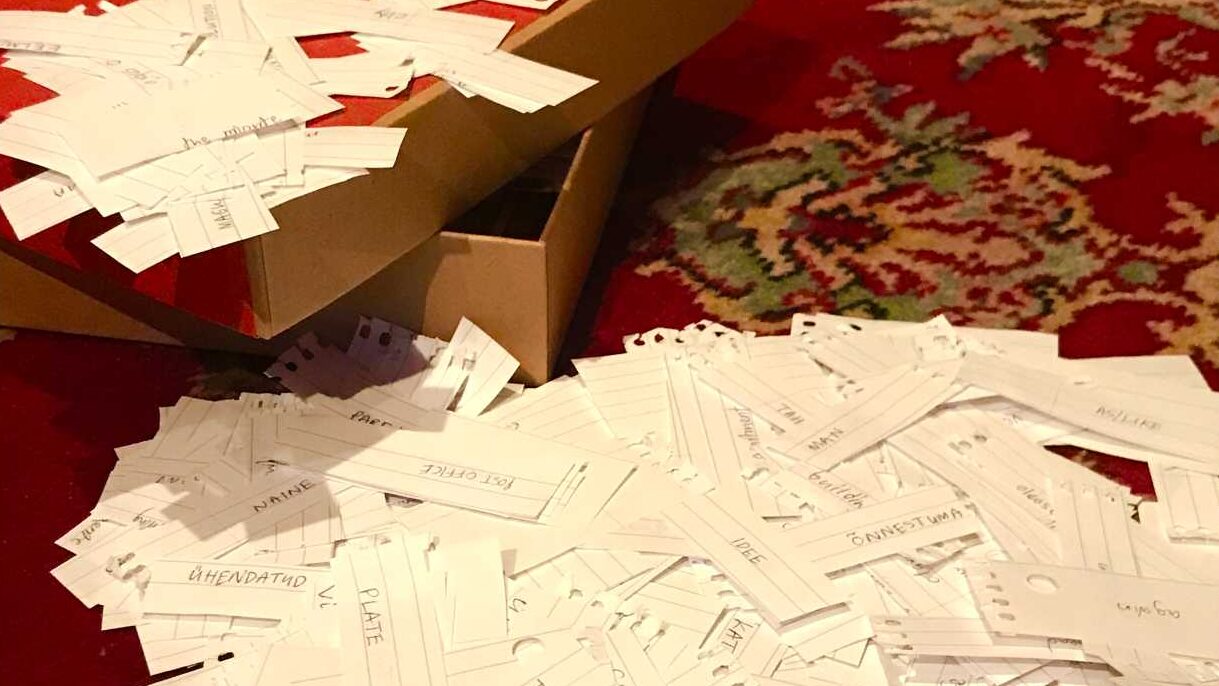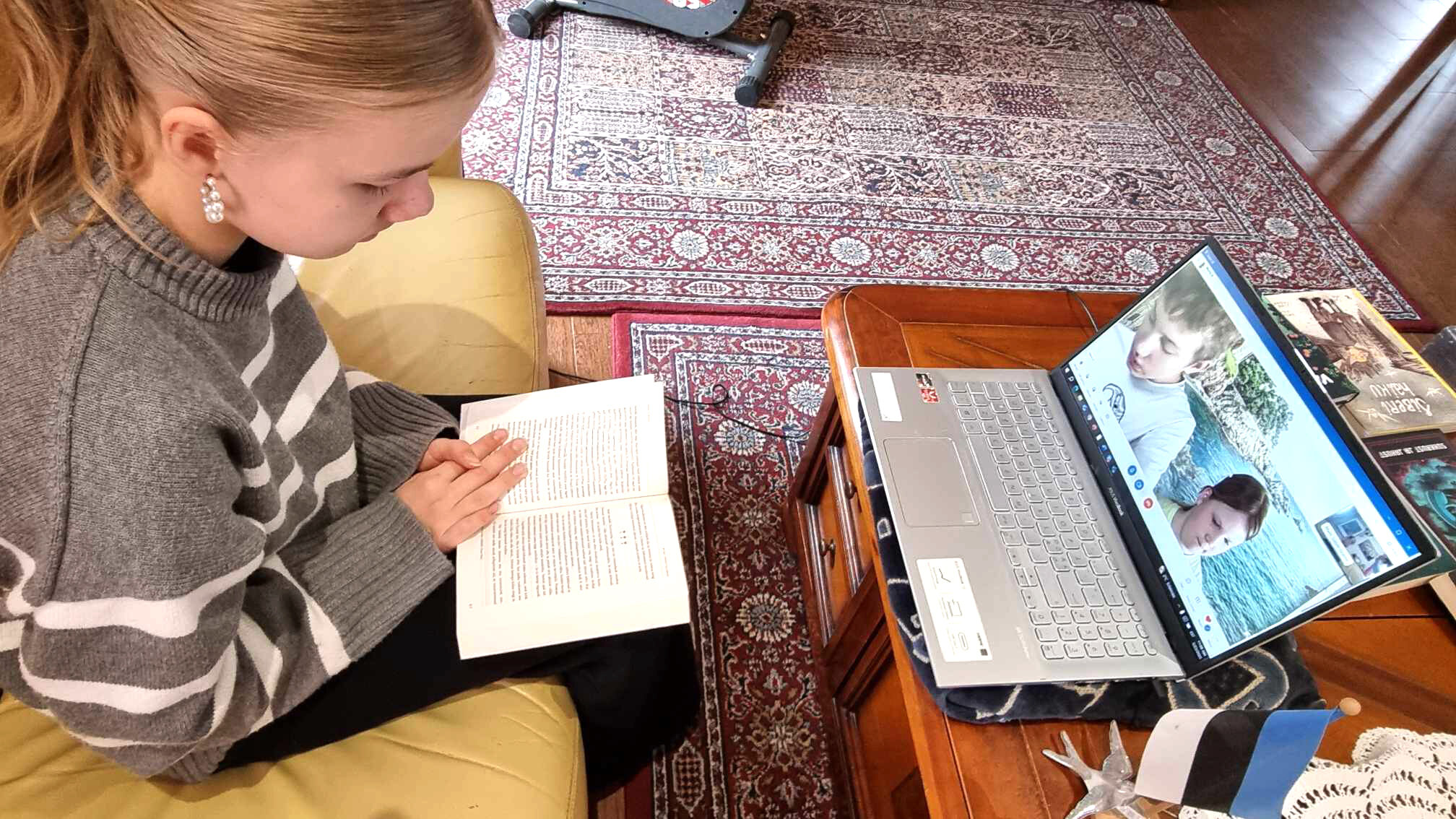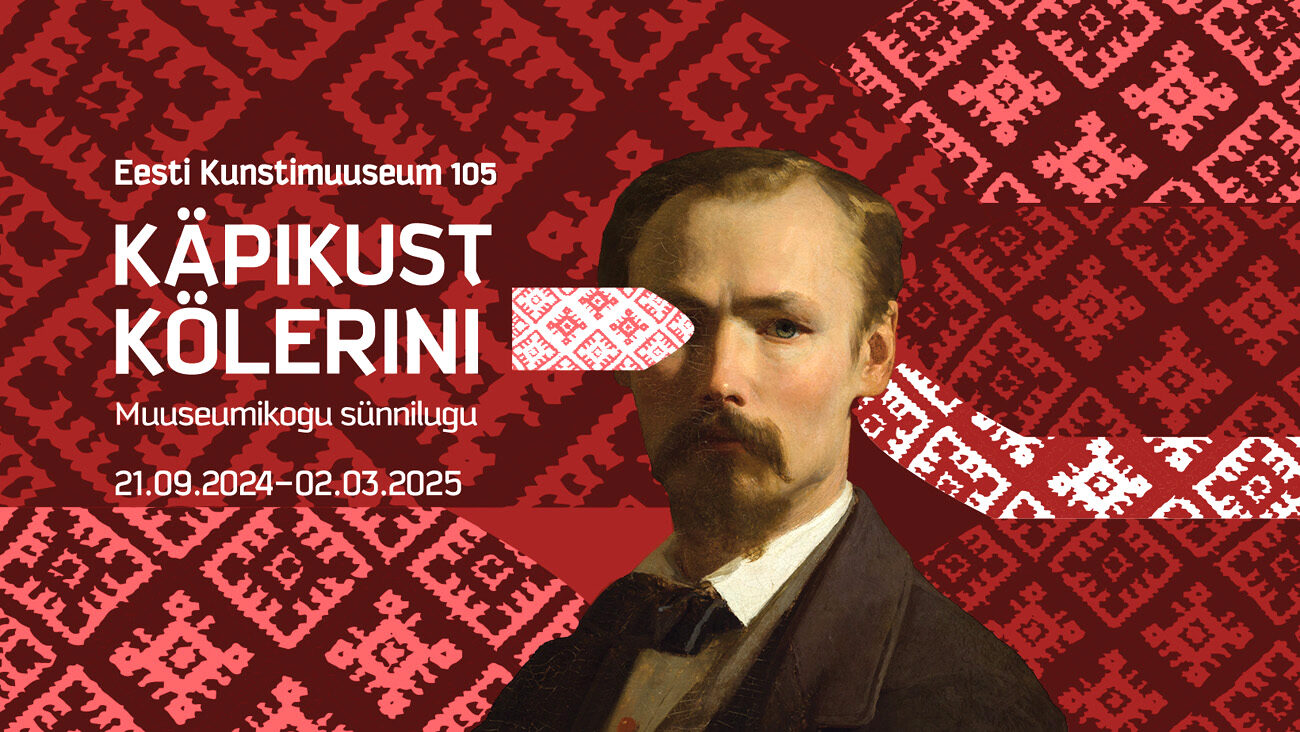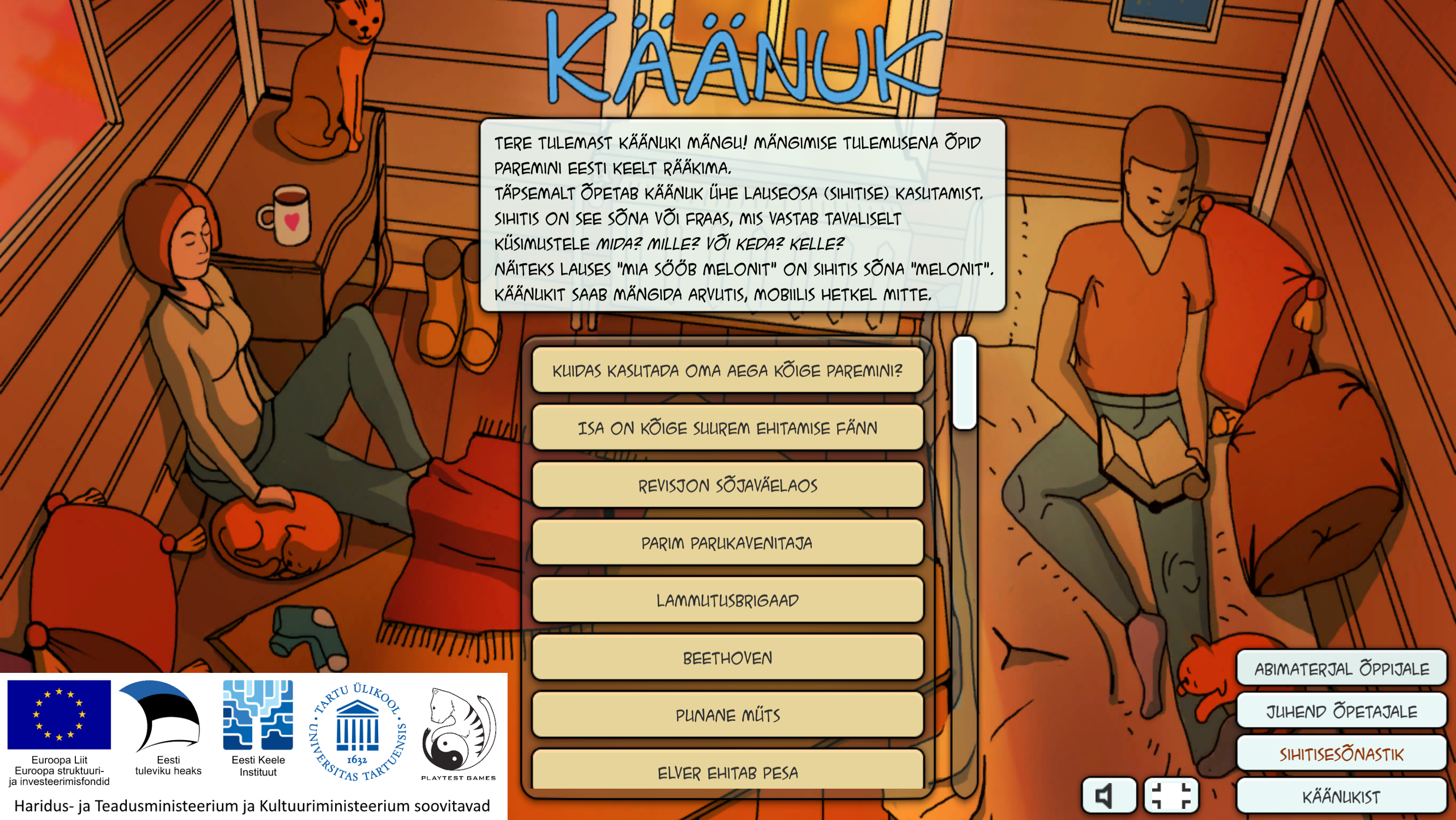Likewise, word order in Estonian becomes clearer with repeated use.
Vocabulary is one thing, though, that needs to be prepared before one can even try to talk to someone in Estonian, so this method turns memorization into a fun game. It's actually an activity I did when I was learning to read for the first time in English. As a little kid, I would see words all around and want to know what they meant, and so my mom would help me to write them down on paper and pronounce them out loud. After which, we would put it in a colourful woven basket with a lid to look at later. This became the “word box.”
I was reminded of the word box game recently when trying to revamp my usual language practice routine. Admittedly, that routine is not as diligent as I would like it to be, but if I have such fond memories of this old activity, if the words stuck for me back then, maybe it has half a chance of working with the predicament of learning Estonian words. Maybe people who are learning can add to their bank of verbs, nouns, and adjectives to prevent that awkward feeling of stopping partway through a sentence and not knowing what a certain word for something is.
It's pretty simple really. Quite similar to how flash cards would work, except putting the words in a box or bag gives the words a physical place that you can't ignore. Put it by your bed if you have to, to remind you to do your daily language studies.
First, identify the 300 most common words used in conversations. Lists of these are easy to find online, and usually include words like “people”, “make”, “day”, “world”, and “eat.” You can also look around your home and choose the names of a few things you see around you.
Then take an English to Estonian dictionary, and on a piece of paper, write the Estonian translations of all of these words on one side of the paper. In the dictionary, look for the most basic conjugation of each word to write down.
Divide the paper into three columns and put a few centimetres of space above and below each word. You can leave a line empty above and below each word if you're writing on lined paper. On the other side of the paper, write the English equivalents of those words, making sure that each word is back-to-back with the corresponding Estonian word.
With a pair of scissors, cut all the way down the paper so that the three columns become three strips of paper. Then, carefully cut out the individual word pairs from each column. You won't be able to cut too many pieces of paper at once to save time, unfortunately, because the paper will get pushed around. It's better to do it slowly, so the paper word snippets aren't irregular and messy.
When all of the words are cut out, put them in a box or bag; basically any receptacle that will keep the words organized. You might even want different boxes for different types of words.
Now, how do you use the word box? Well, for words other than verbs, just shake up the container of words so that they're randomized, and go through the entire container, guessing what the correct translation is from Estonian to English or English to Estonian. This depends on what side of each paper snippet you see first. It will test your intuition, help you to recognize patterns and the occasional cognate (a word with similar linguistic origins, ones you might recognize from what you use in English).
If you incorrectly guess a word, put it aside in another container of words that need more practice to remember. Eventually, the more you go through these challenging words, you'll find that they stick in your head more than any other word.
When you take a verb out, conjugate the verb for each pronoun: I, you, he/she, we, you (plural), and they. Then conjugate that verb into the past tense in the same way. You can also try to conjugate the verb in the conditional tense, and so on.
I've mentioned a similar educational game previously in Eesti Elu, but you can also grab a handful of words from your word box without looking, and then try to construct a complete sentence with them. This requires a more confident grasp of how different sentence types work in Estonian, such as how you use the word kas to indicate a question. Try doing the game with an Estonian-speaking language buddy, and ask them to correct you when you've made a mistake in arranging your sentence.
As ever, the best approach to learning is to have fun and to accept that you will make mistakes on the way to getting better. Wear those mistakes like a badge of honour because, above all, it means that you are learning and you are trying your best!




